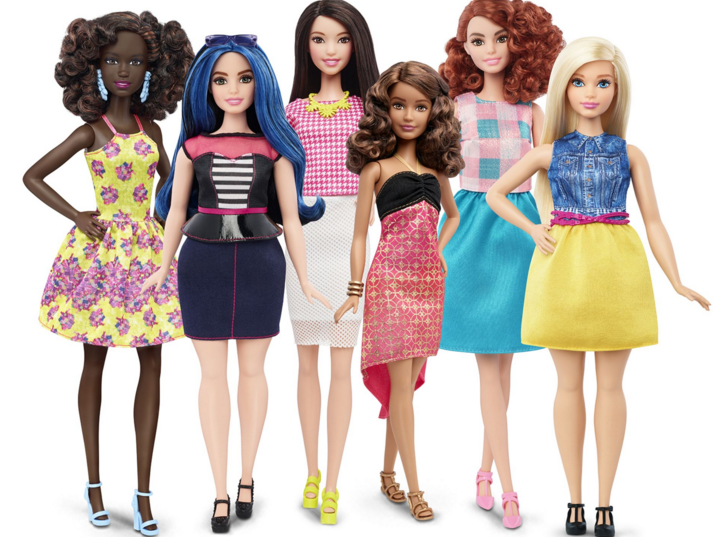By Margaret Hodson ’16, Editor-in-Chief
Entrepreneur Barbie isn’t the only one at Mattel with business acumen. Mattel recently announced the release of 33 new Barbies with 4 different body types, 7 skin tones, 22 eye colors, and 24 hairstyles. Along with the “original” body type, the new builds are petite, tall, and curvy. The new 2015 collection of Barbie Fashionistas is being promoted with a flurry of advertising and publicity, including the Mattel-created hashtag #TheDollEvolves. Mattel’s decision to produce these news dolls represents a strategic, profit-driven business decision in response to a 20% drop in brand sales between 2012 and 2014. Although the driving factor behind the change was the bottom-line not body image, it still constitutes a victory for the body positivity and inclusivity movements.
Although Mattel estimates three Barbies are sold every second, in 2014 Barbie lost her top-selling girls toy spot to Queen Elsa. Queen Elsa is made by Hasbro, and Mattel’s profits suffered. Mattel attributes a tip is sales to the intertwined buying power and morals of “Millenial Moms.” “We were seeing that Millenials are driven by social justice and attracted to brands with purpose and values,” said Mattel’s Director of Global Brand Insights. “And they didn’t see Barbie in this category.” Thus, Mattel decided to revamp Barbie—but in secret. The fruits of the project code-named “Project Dawn” were just revealed to the public at the beginning of 2015.
Mattel had to undertake extensive changes to its best-selling toy to create the Barbie Fashionistas line. They needed to create new shoes for wider feet, new clothes for new body shapes. It is a lot of work to choose the perfect 24 hairstyles or 22 eye colors. It was even difficult to translate “petite,” “tall,” and “curvy,” into foreign languages. After all, those words in English were deliberated endlessly to make sure the brand is sending the right message to its consumers.
And what exactly is the right message? Barbie has long been criticized for sending the wrong message to its customers, especially impressionable young girls. Regardless of whether Barbie really does affect body image, the claims and complaints have caught up to Mattel. “And no company, of course, wants the purchase of their toys to become a matter of moral anxiety of their customers.” said Megan Garber of the Atlantic. Bowing to cultural pressure is a good way for Barbie to alleviate much of the negative publicity.
With regards to its own publicity efforts, Mattel must walk a fine line. It can’t admit that Barbie has impacted cultural or girls negatively in the past. Instead, it releases statements such as “by introducing more variety into the line, Barbie is offering girls choices that are better reflective of the world they see today.” It’s not that they’ve been doing anything wrong—but now, they are doing things even better. So Mattel would have the consumer believe.
It however seems clear that Mattel money not morals drove Project Dawn. “It did so instead as part of a cynical business calculation.” said Megan Garber of The Atlantic. “The changes in Barbie’s body may have arisen out of the company’s desire to do good; mostly though, they arose from its need to do well. This was the oldest and most American of things: cultural change by way of capitalism.” Following in the footsteps of brands such as American Girl dolls, Mattel seems to have finally realized that diversity is good business. Regardless of the reasons behind the change, the end result will benefit positively both Mattel’s bottom line and the next generation of young women.
Sources:
http://mashable.com/2016/01/28/barbie-body-shapes/#FSPqZhN_AuqU
http://www.theatlantic.com/entertainment/archive/2016/01/barbies-hips-dont-lie/432741/
http://www.glamour.com/inspired/blogs/the-conversation/2016/01/new-curvy-barbie
Image Source: http://www.usatoday.com/story/money/nation-now/2016/01/28/barbies-new-shapes-tall-petite-and-curvy/79449784/




